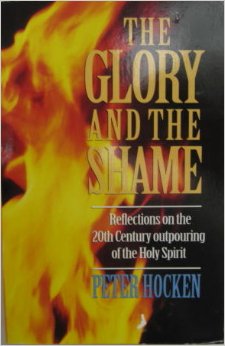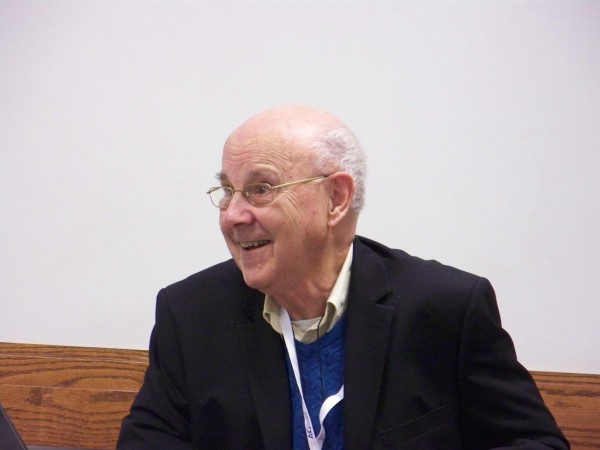Peter Hocken: The Glory and the Shame
 Peter Hocken, The Glory and the Shame: Reflections on the 20th-Century Outpouring of the Holy Spirit (Gildford, UK: Eagle, 1994).
Peter Hocken, The Glory and the Shame: Reflections on the 20th-Century Outpouring of the Holy Spirit (Gildford, UK: Eagle, 1994).
The Glory and the Shame is perhaps the most outstanding piece of Christian historical interpretation produced in recent decades. It covers the major outpourings of the Holy Spirit in the recent century, from Azusa Street to the charismatic movement, to the contemporary expansion of the “non-denominational,” Spirit-filled churches. Father Hocken rightly sees them all as manifestations of the same Holy Spirit. In this he continues the theme developed in his earlier work on the charismatic renewal One Lord, One Spirit, One Body (Gaithersburg: The Word Among Us, 1987) which dealt with the charismatic movement as an ecumenical force.
Fr. Hocken is one of the pioneer scholars of the Catholic charismatic renewal, entering the movement in 1971. He helped edit the Catholic ecumenical journal One In Christ, and also served as Secretary of the Society for Pentecostal Studies. He has written many scholarly articles for its journal, PNEUMA. A devout Roman Catholic, Fr. Hocken has been a long time resident at Mother of God covenant community in Gaithersburg, Maryland.
However, Hocken’s Catholicism does not obscure the deep respect he has for other Christian denominations, nor does it blind him to some of the extremes of Catholic piety. In a passage in The Glory and the Shame that must have been particularly difficult for him to write, Fr. Hocken chides some of the Catholic charismatics:
One particular danger [of the Catholic charismatic renewal]…is the combination among some Catholics of a charismatic emphasis on contemporary revelation and a Marian devotion of a strongly apocalyptic character. In some places, this combination has almost taken over and displaced Catholic charismatic renewal. Its fruits appear to be highly questionable…Instead of their renewal experience opening them to the saving work of Jesus on the cross and the power of the Holy Spirit to transform, they have majored on revelations and messages. (p.188)
Hocken’s gentle by effective critical/prophetic attitude is evident throughout the entire work. He writes in the opening chapter:
It is important to reflect with open hearts and critical discernment upon this extraordinary phenomenon [i.e., the Pentecostal outpourings]. Simply to be critical is to risk missing the glory and the grace; but to be enthusiastic without discernment risks welcoming the viruses that obscure the glory and sully the grace. (p. 11)

Father Peter Hocken, pictured here at the Society for Pentecostal Studies convention in March 2014, has been active in the charismatic movement since 1971.
Most Christian histories of the Pentecostal revival or charismatic renewal have been apologetic. Their purpose has been to explain the Spirit-filled movements to a skeptical Christian public, or supply basic histories to Spirit-filled readers. Recently I eagerly purchased a new volume by a noted Charismatic historian (best left unnamed) which dealt with an important Spirit-filled para-church ministry. It was embarrassingly hagiographic in spite of the fact that the organization was undergoing considerable decline, and suffering from internal divisions. It was as if the Bible told of King David’s rule without the story of his adultery or the rebellion of his son. Christian historians could do no better than to follow Hocken’s example which evenhandedly describes the grace (glory) of the renewal, but shows also its sin (shame). Glory and the Shame is especially welcome to those us who have been long time charismatics and have been embarrassed by the excesses and scandals of the 1980s.
Category: Church History, Summer 2001


